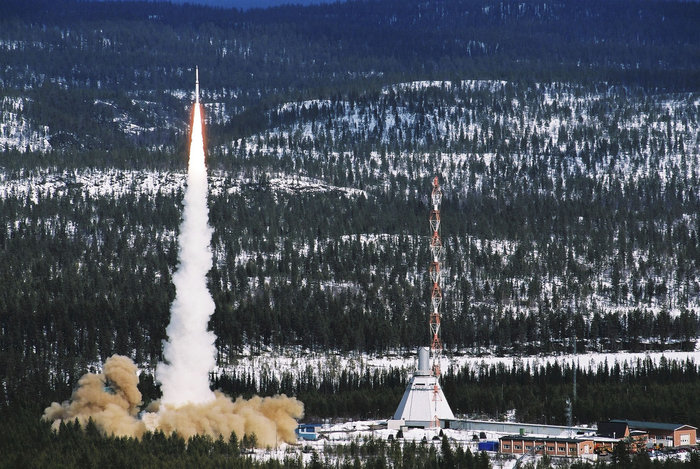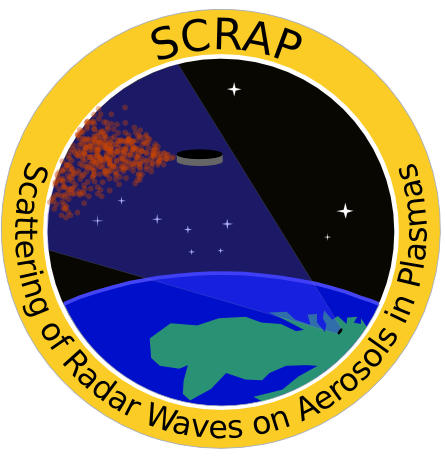Month: June 2014
Happy Midsummer!
The CDR meeting is approaching and SCRAP team is getting ready for it. Six members of the team will be in Munich, Germany, on June the 24th and 25th to present the actual status of the experiment. These team members are Alexander, Hannah, Hannes, Matteo, Rasmus and Simon, and they are practicing the presentation on Skype since they are all spread around Europe at the moment!
But today is June the 20th and in Sweden this means Midsummer’s eve! Midsummer day celebrates the summer solstice and in Sweden it is one of the most important festivity, celebrated with traditional dances and songs around the flower-covered maypole.
This is a good occasion to take some rest before the CDR and SCRAP team wants to wish you all a nice Midsummer’s Eve.
\The SCRAP team
Esrange Space Center
In the spring of 2015 the SCRAP experiment will be launched on a rocket from Esrange Space Center in Kiruna, Sweden. Since I have had the privilege of working at Esrange for the past and current summer, I figured it could be of interest to share a bit about what is happening in the wilderness above the Arctic Circle.

Esrange was built in 1964 by ESRO (European Space Research Organisation), a predecessor to ESA, as a sounding rocket launch site. The reason for the choice of location was primarily the access to an impact area of 5600 km² stretching northwards towards the Norwegian border. To this day, the area is almost completely uninhabited except for a few reindeer herders. SSC (Swedish Space Corporation) took over the ownership of the range in 1972 and expanded its capabilities beyond the launching of rockets. Today, Esrange is among other things also a base for scientific research with high altitude balloons and the largest civil ground station for satellites in the world.

Since the foundation, over 500 sounding rockets have been launched from Esrange. This has in recent years included 8 launches of Castor 4B rockets as part of the European microgravity programme MAXUS and, of course, 16 REXUS rockets. In a near future the base will also have the capability of launching satellites into orbit. Even more balloon campaigns than rocket campaigns have been conducted at Esrange over the years and are becoming increasingly frequent. Last summer, for example, a balloon with twice the volume of Globen in Stockholm carried the experiment PoGOLite (led by KTH) for twenty days on a nearly circumpolar flight westwards from northern Sweden to western Siberia.

This summer the launching operation of the base is focused on the exciting D-SEND#2 project of JAXA (Japanese Aerospace Exploration Agency), which aims to test a silent supersonic aircraft design. The aircraft will be dropped from a balloon at 30 km altitude and glide with 1.3 Mach over a microphone setup carried by blimps spread across the fells of Lapland. The interested reader can find more information on JAXA’s website: http://www.aero.jaxa.jp/eng/research/frontier/sst/d-send.html.

The unique geographical position of Esrange in the polar region has made it ideal for certain types of scientific research, such as that of northern lights and the ozone layer. Polar mesospheric summer echoes are also actively being studied by both radar and rockets from Esrange, making the location perfect for the purposes of SCRAP.
Launch campaign accomplished by ISAAC
Link Posted on
Launch campaign accomplished by ISAAC
We are very happy about our friends that have done a great job. The rocket flew as expected and the RMU (rocket mounted unit) are in a good shape which means that we will use the same RMU. Of curse the project is not done for ISAAC. Now they have to analyse the results obtained during the flight.
Particles determied!
The particle charging group has come to the conclusion that copper microparticles are sufficiently good for the experiment, and will be released into the mesophere. There are many interesting particles on the market, but the cheapest ones concidered that would work for the experiment are copper particles. Radius of the microparticles will be 0.1 µm.
The next step for the particle charging group is to find out how to relate measured radar signal to dust particle caracteristics.
In order to validate theoretical models of polar mesospheric summer echoes (which is the purpose of the SCRAP experiment) to radar measurements, there must be a way of relating measured signal to the caracteristics of the dust cloud released into the mesosphere. This can be done through properties such as the scattering cross-section of the microparticle dust cloud.
Figure shows the scattering cross-section of the dust cloud as funcion of microparticle radius, photoelectic property SY of microparticles and mesospheric electron density n.
/ The SCRAP team


